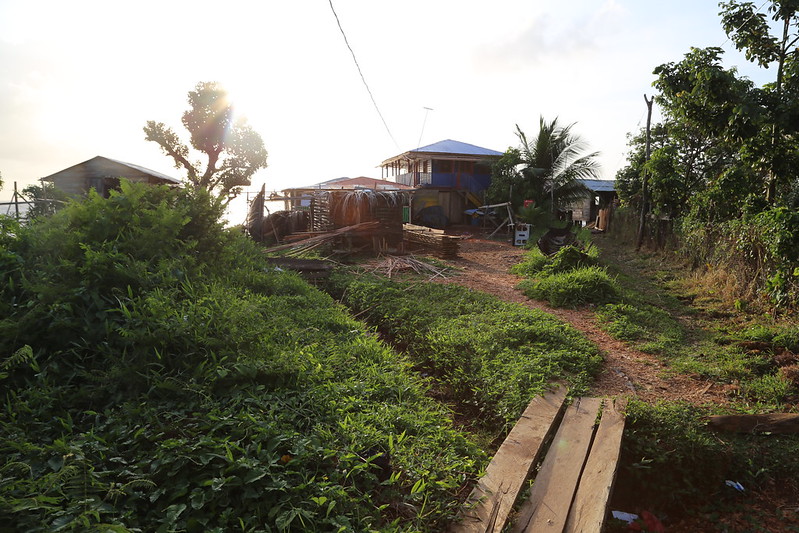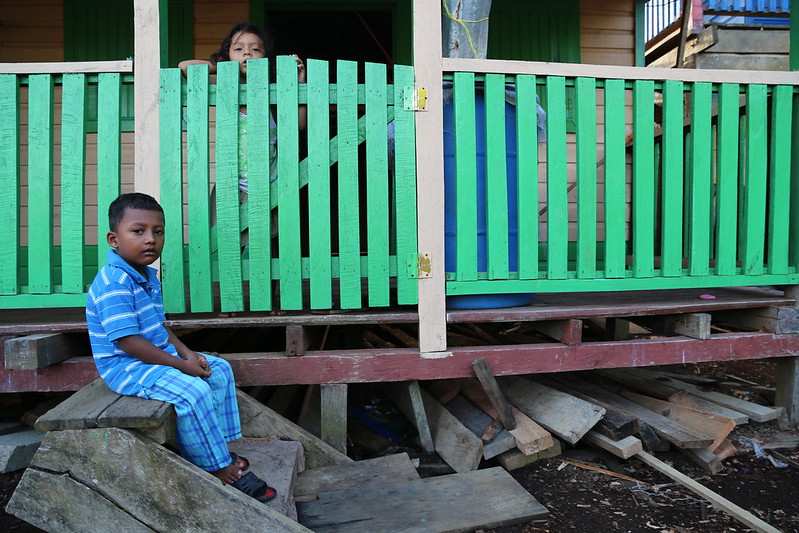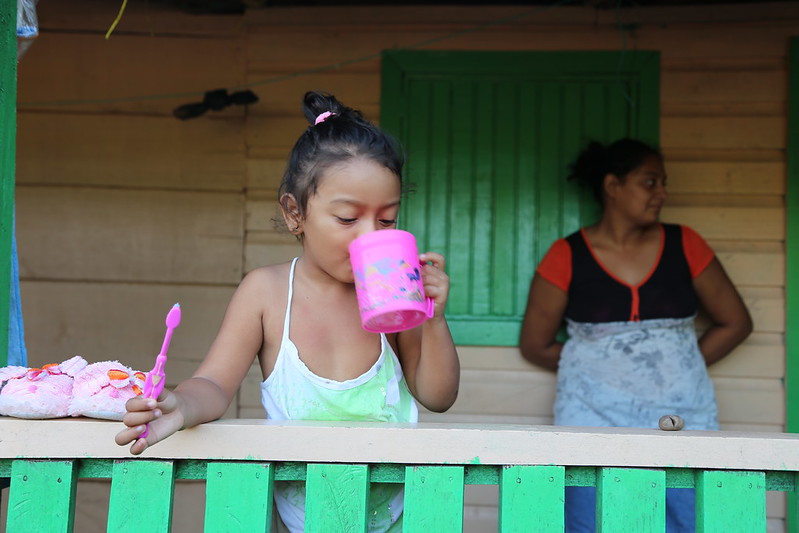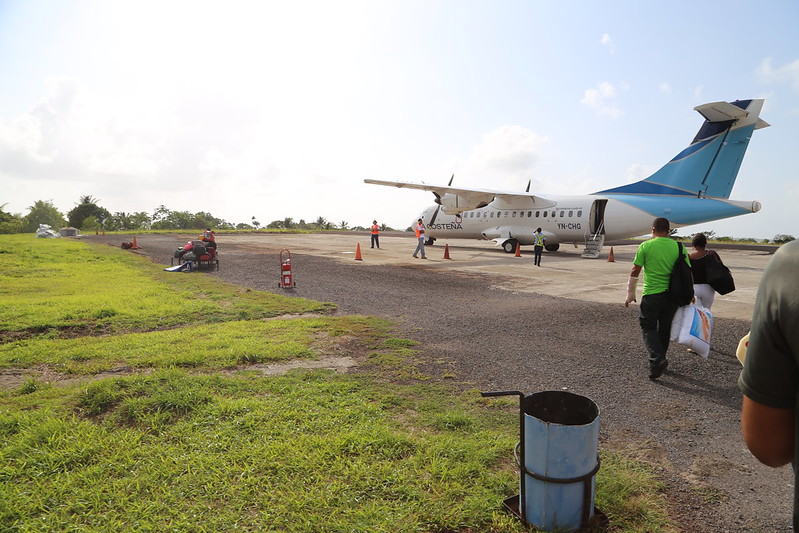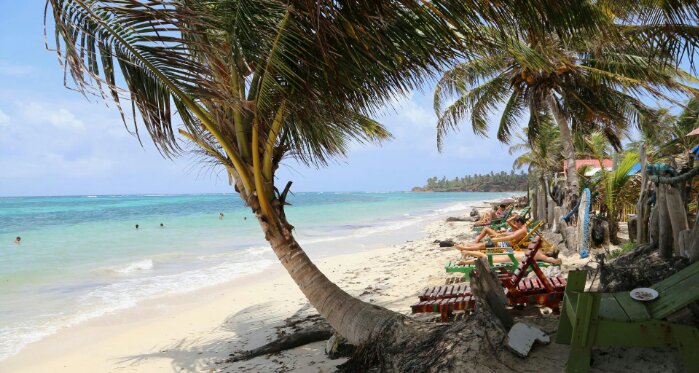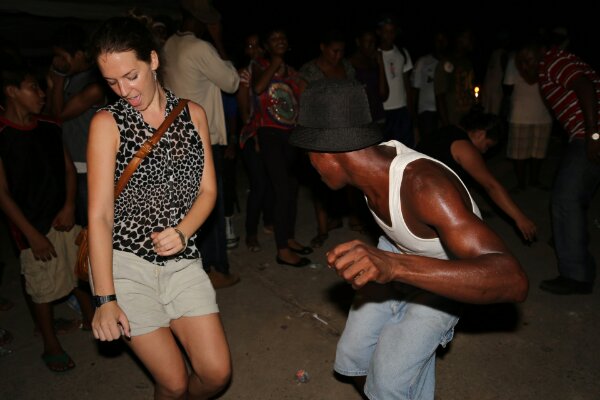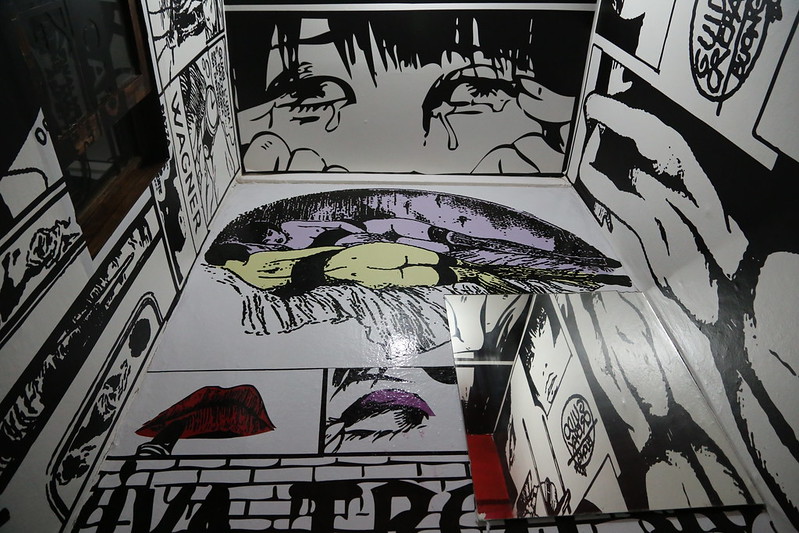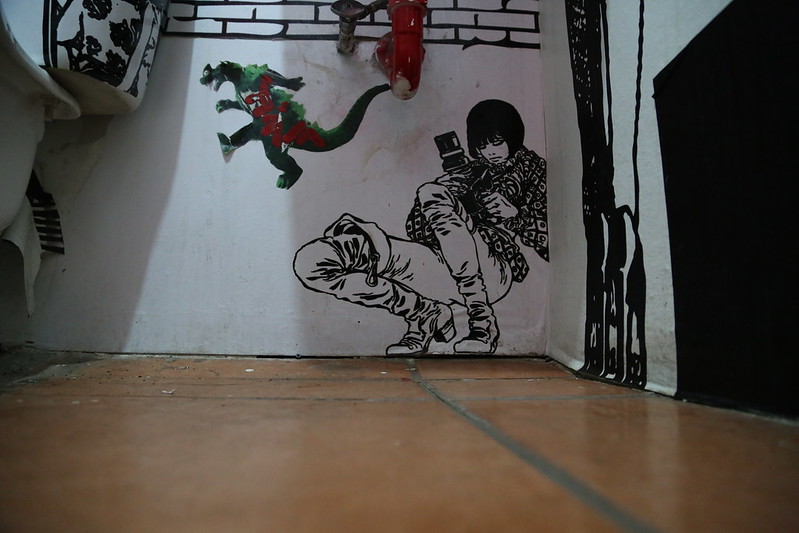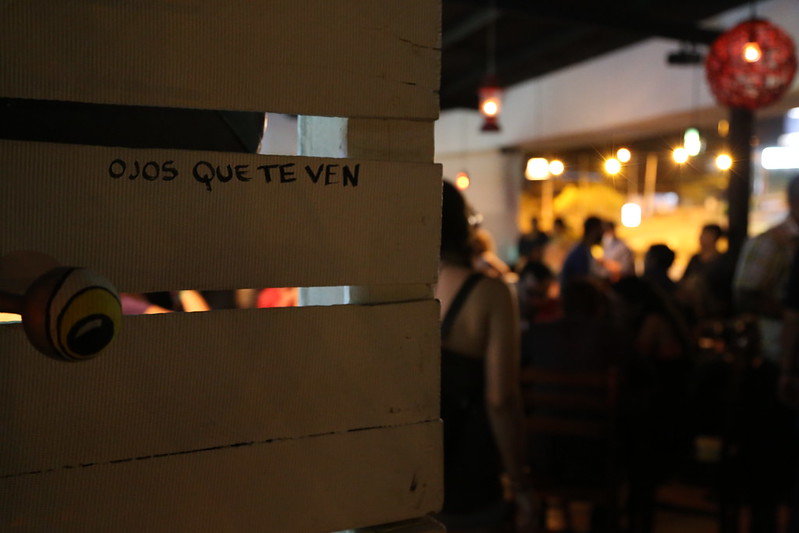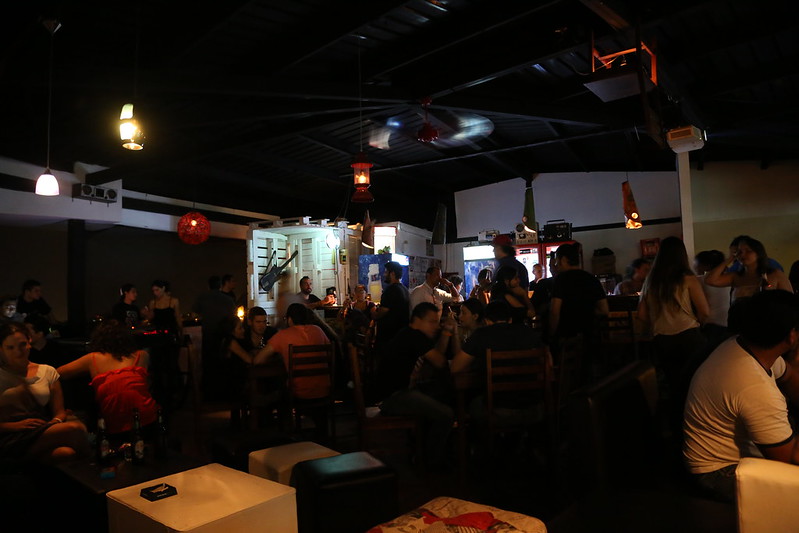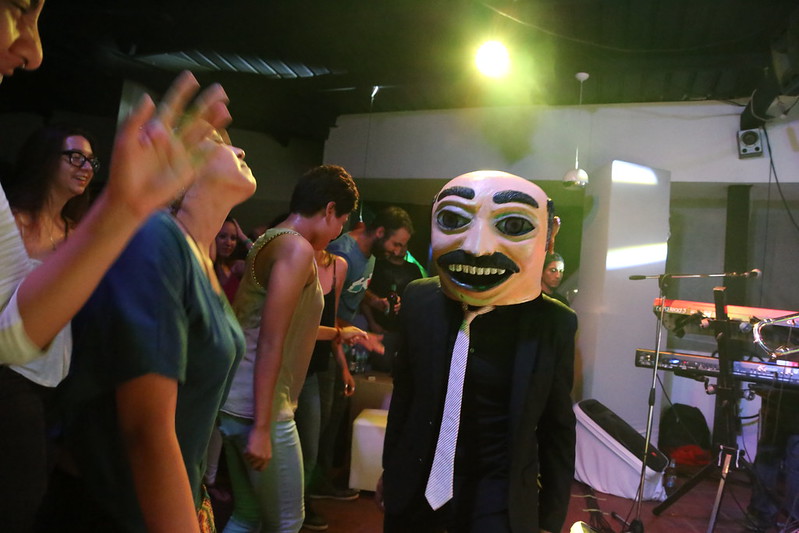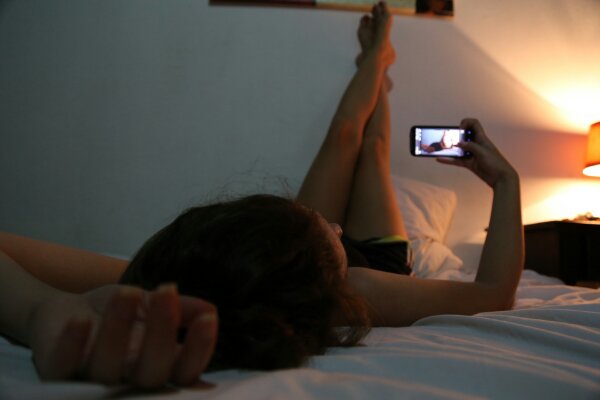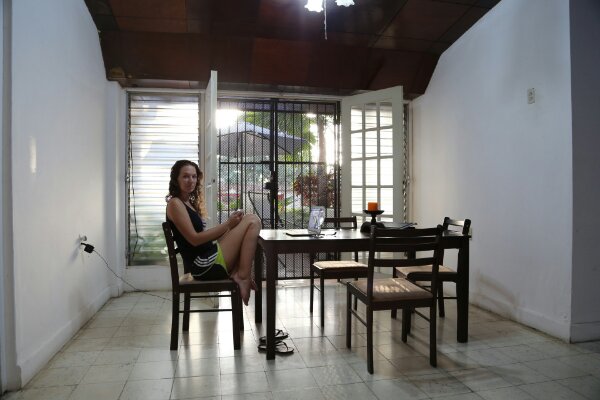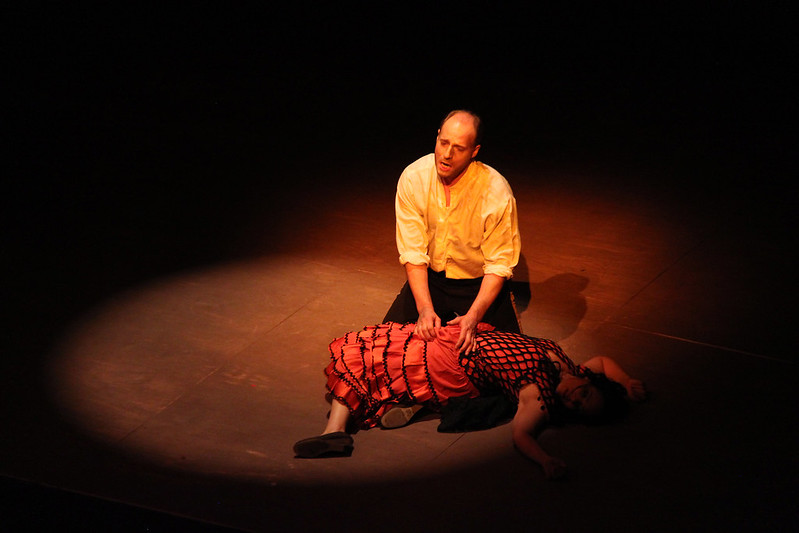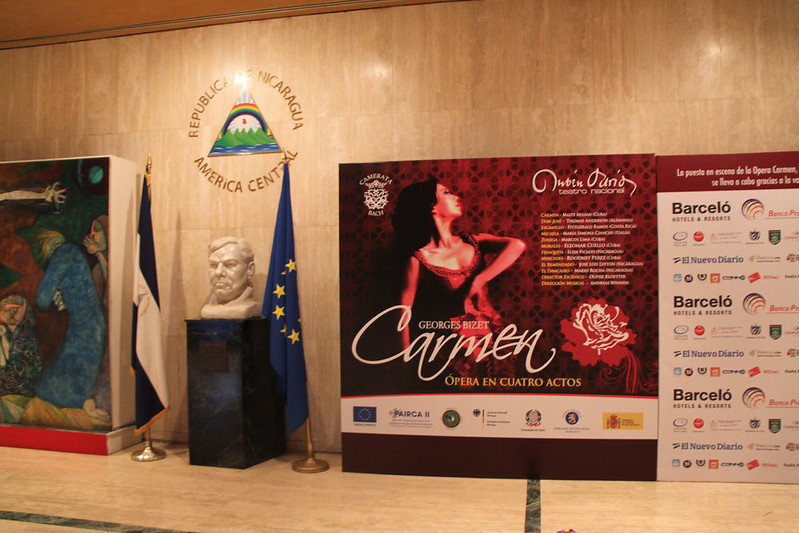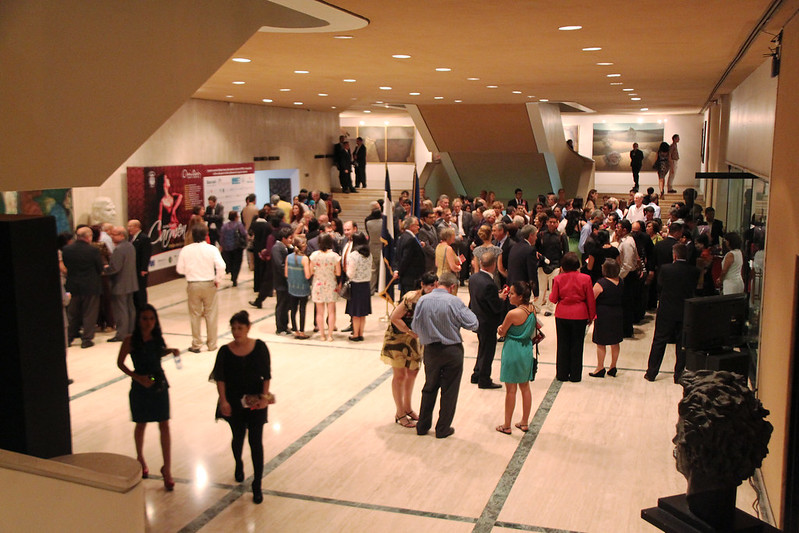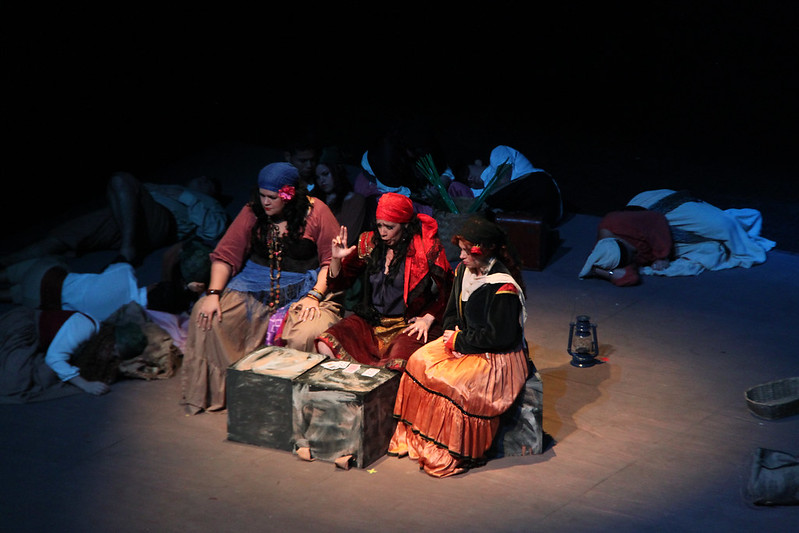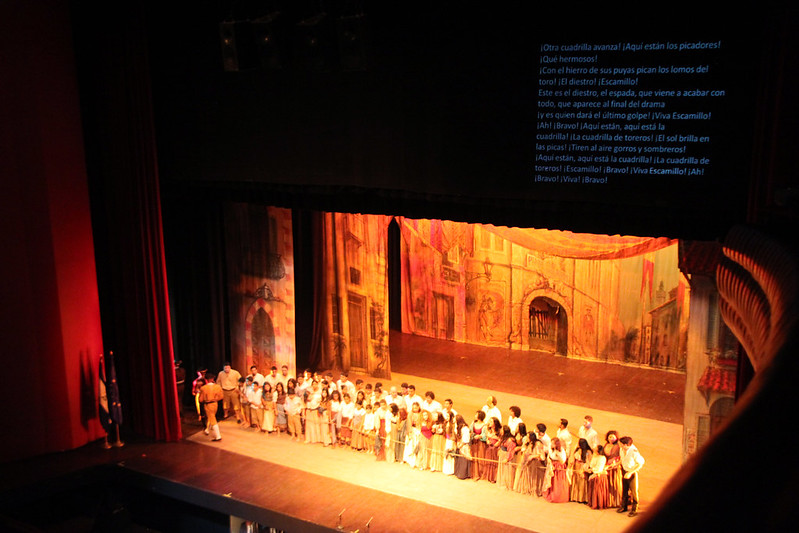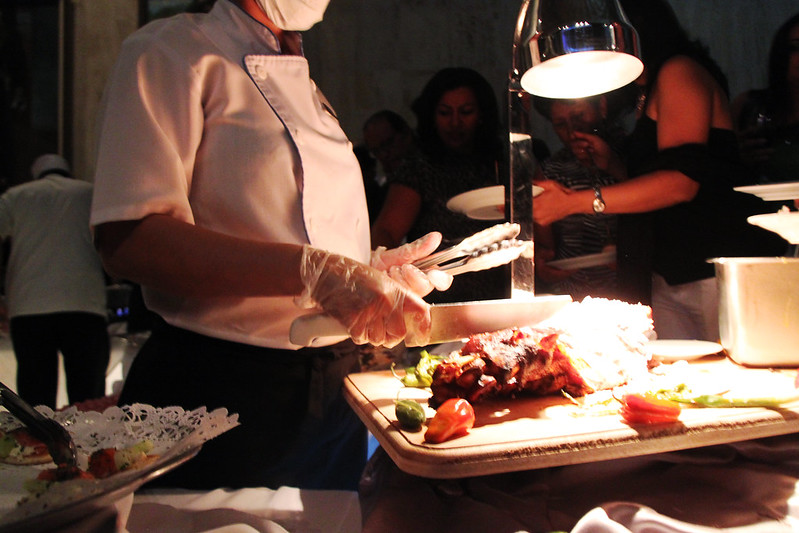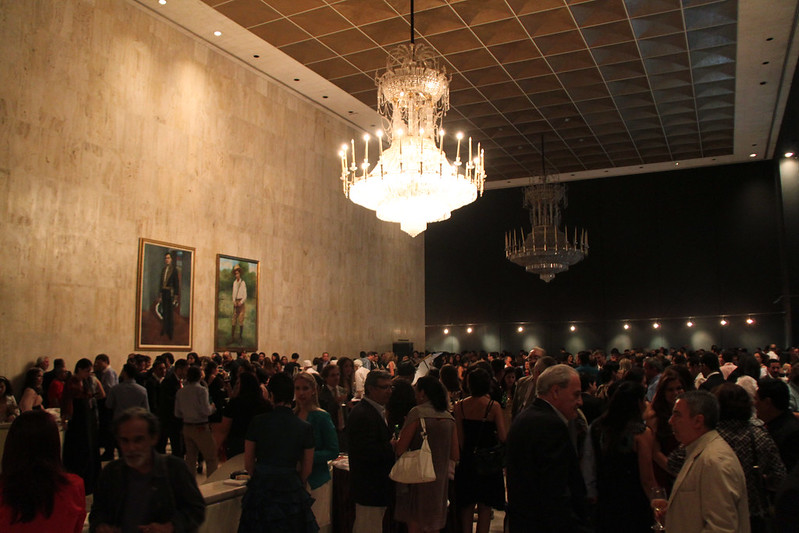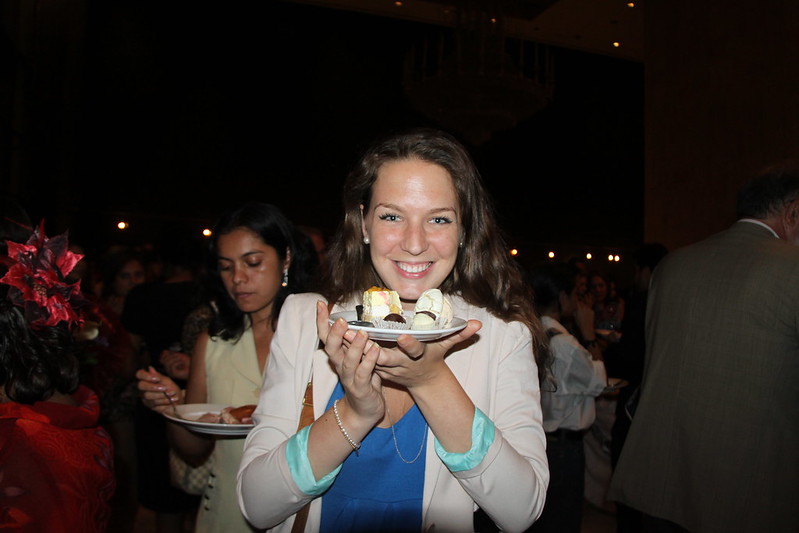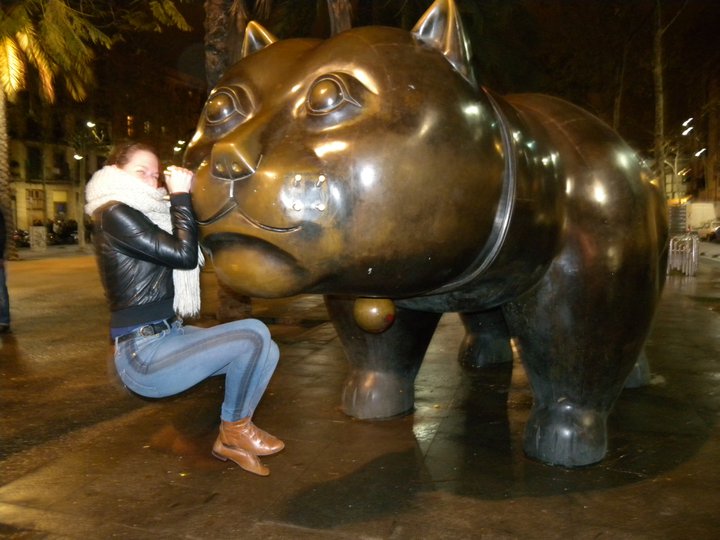The long road to Bluefields and that dirty, dirty dancing.

The urge to travel and see something new, different and fresh took my mind all the way to Nicaragua’s Caribbean coast. It was already Friday, I would get Monday off, and I had three options for my weekend trip:
1. Catching a Saturday morning flight from Managua to Corn Island and spend three full days on paradise beaches. Quickest, easiest and safest, 80USD.
2. Catching a 6h Saturday morning bus from Managua to Rama, 2h boat to Bluefields, arrive at 14pm and spend the rest of the day in Bluefields to see the town and hopefully some Palo de Mayo celebrations before catching a Sunday morning flight to Corn Island. Safe and cheap, 17USD.
3. Catching a 6h Friday evening nightly bus from Managua to Rama, spend 3h in Rama waiting for the sun to rise to catch the 2h boat to Bluefields, spend the entire day in Bluefields and then catch the Sunday morning flight to Corn Island. Most difficult, longest, most interesting, 17USD.
I asked a friend what he thought about my options,
“Well, I would really prefer you to take the flight or at least go by day with the bus, but I already know which option you will choose..”
(For those of you wondering how to get from Managua to Bluefields and/or Corn Island, the options are 1,5h by air with La Costeña (leaving 6.20am or 14pm, +50522632142) or by 8-12h Bus+Boat with Transportes Wendelyn Vargas (leaving 6am or 9pm, +50522532879) to Bluefields and then a 15minute flight with La Costeña – you can easily book your flights online or via the phone. Booking a seat in the bus is not possible and you will need to go to the Costa Atlantica Terminal in Managua directly to buy the tickets, what you can do is call to confirm that there are still free seats. For the hardcore savers with a lot of time to spend there is also a boat from Bluefields to Corn Island but I know little of it as it leaves only once a week and takes 6-24h.)
So yes, I actually went to the bus terminal on the same day to catch my 9pm bus. I just couldn’t miss out on the experience of going by bus by night, talking to sleepy people in Rama, and getting a full day in Bluefields.
The busride from Managua wasn’t hard at all. The full bus left a couple of minutes after 9pm and I was sitting next to Michael, a guy my age from Corn Island who had been working on a cruiser ship the past six months and was going back home for vacation, bringing bottles of Jack Daniels to celebrate with his friends. We shared some nice talks and watched each other’s bags the way good travelbuddies do. I was really impressed by the great standard of the highway and managed to get about 2h of sleep in between the loud salsa music and the stops we made. At 3am we arrived in Rama, not a second late.
In Rama it’s smart to get in line as soon as possible to get your name on the listfor the boats, there was no problem as it is low season now and there were not that much people but Michael told me it gets really bad when many buses arrive at the same time. I spent the next three hours in Rama walking around with my camera by the station and speaking to people while Jurassic Park III was playing on a TV on the wall. People were sleeping, eating and yawning. I took some photos of a boy that laughed really hard when he saw himself on the display of my camera and spoke to the girl sitting next to him, her name was Scarlyn and she was 16 years old.
“That’s such a beautiful and expressive boy, is he yours?”
“Yes it’s my son, Joel. He is two years old.”
Scarlyn and I had a talk, about stuff, about her studies, about life.
“So where’s the daddy?” I finally asked. “He’s at home with my mother, my 36 year old stepdad is the boy’s father.” she answered without showing any sign of feeling uncomfortable about the fact. “Oh okay, how long has he lived with you?” I asked, trying not to disrespect her by showing the pity she wasn’t asking for. “For the past 9 years” she calmly answered. I was impressed by her very mature and calm way of speaking reasonably with the boy when he started to whine and she added that she thought it was important for her to continue her studies, and that she didn’t mind me to share the photos and her story on my website.
Scarlyn is one of many young mothers in Nicaragua, teen pregnancies being the most common reason for school dropouts in the country. An extremely sad reality of little girls suddenly being thrown and forced into being adult, responsible women..
At 5.30am it started to lighten up and we moved from the benches in the station to wait by the boats. “We can leave as soon as the sun comes up.” Michael told me and people started to place their bags in lines on the ground as men in camouflaged suits searched their luggage for drugs with a happy golden retriever.
The boatride was cold. Bring something warm if you are going by speedboat! The wind was hard and people were covering their faces, but the air was crisp and the views were beautiful. I was a bit exhausted and finally fell asleep for the hour I had left in movement.
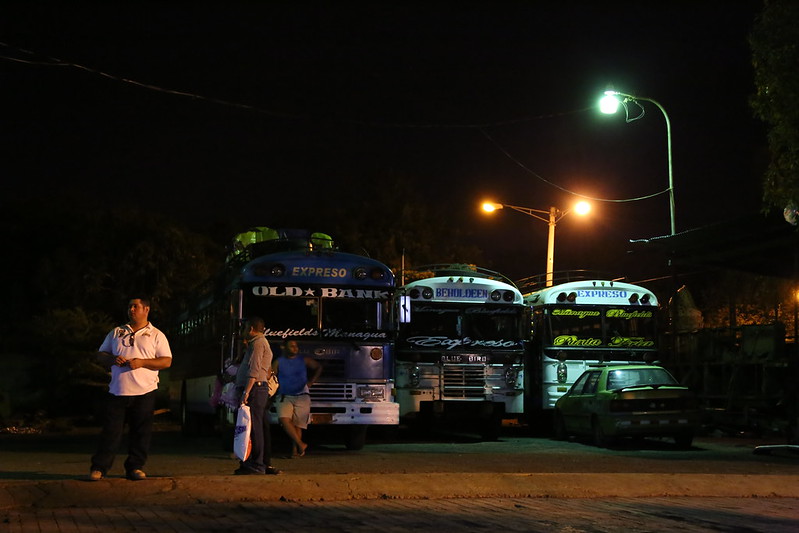
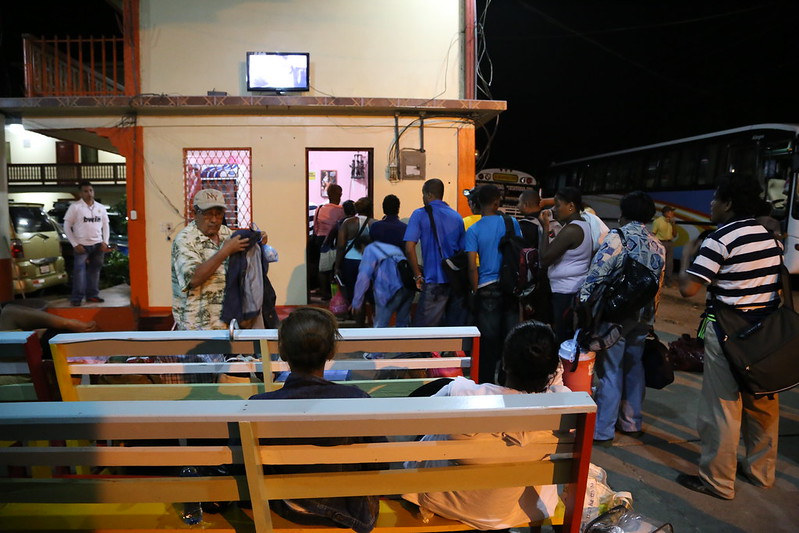


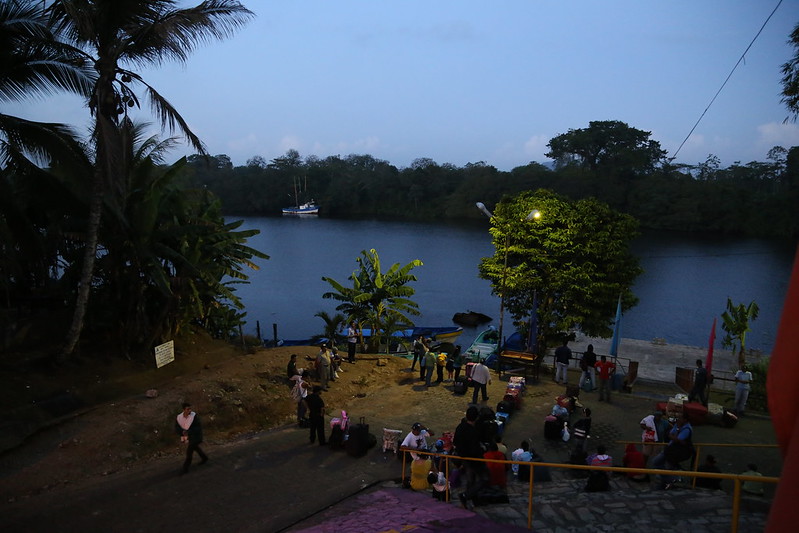


We arrived in Bluefields two hours later, at 8am, and I had no idea where to go apart from the fact that I wanted to wash my face, wander around and find a place to stay, so I said goodbye to Michael and started walking. I went to the central market which as you know is golden for both photos and people, I met so many interesting people during the day (Majesty, Jorge) that I will share the stories separately from this post not to make it too long.
Anyway, my first mission was finding a place to sleep and leave my bag, I stepped into some cheap hotels that didn’t really call for my attention and then an old woman pointed to a house. “Over there, by the mattresses, the lady in there is renting rooms.” I stepped into the porch of the house and the lady was a bit surprised that I had found it but I got a nice room with en suite bathroom for 10USD, much less than those ugly hotels. The daughter in the house was 28 years old and told me that she was a hairdresser, so I let her cut my hair. My walk around Bluefields was beautiful and I was trying to listen in as much as possible on the Creole English I heard on the street. A guy in Rasta’s approached me and asked: “Hey gyal, I be wonderin is you people be with you der in de Sweden.” I think he wondered whether I have my family in Sweden or here, but I’m still not sure. At noon I took a two hour powernap before getting out again, in the evening I had a great fish fillet at the Pelican’s Bay Restaurant on the seashore and when I came home I sat for a while with the old landlady, watching Nicaraguan talk shows and laughing.
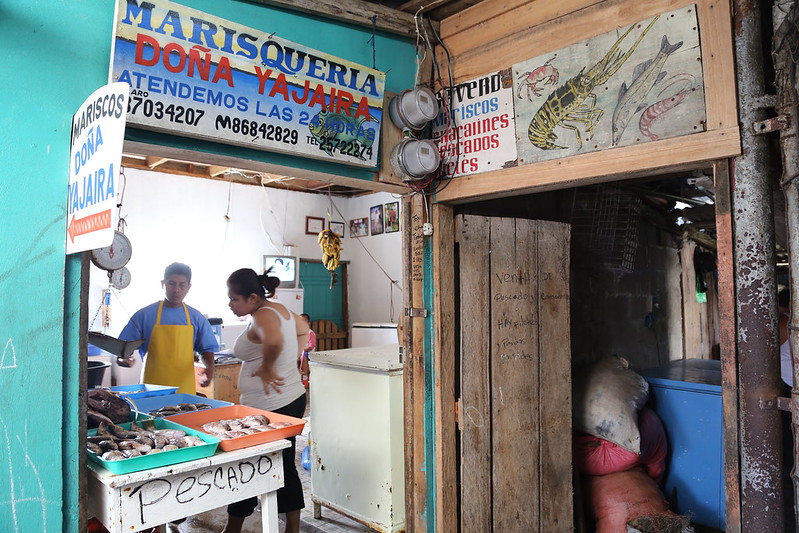



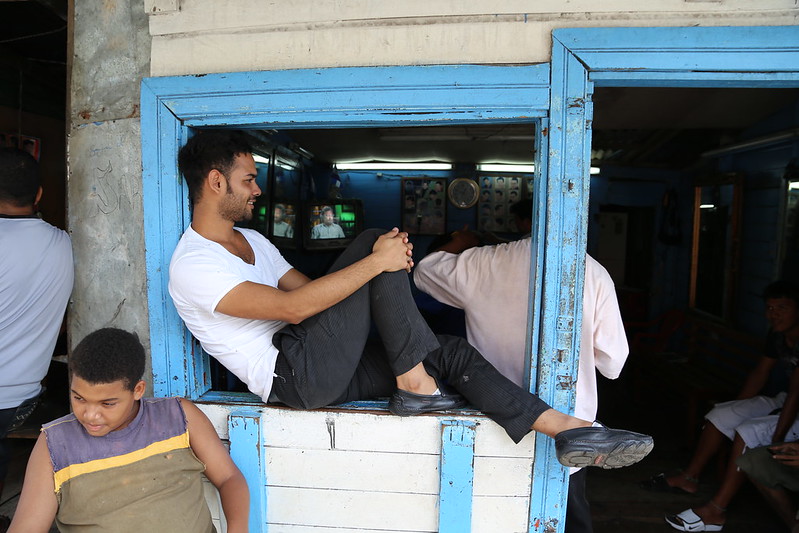

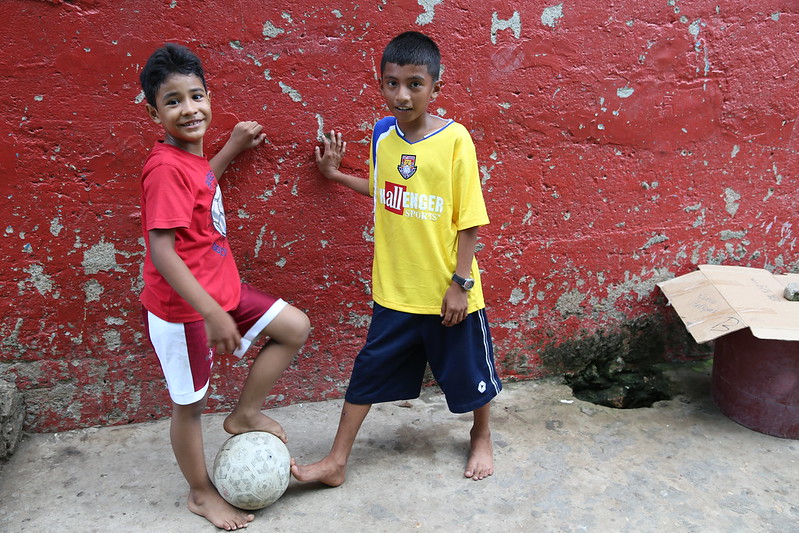


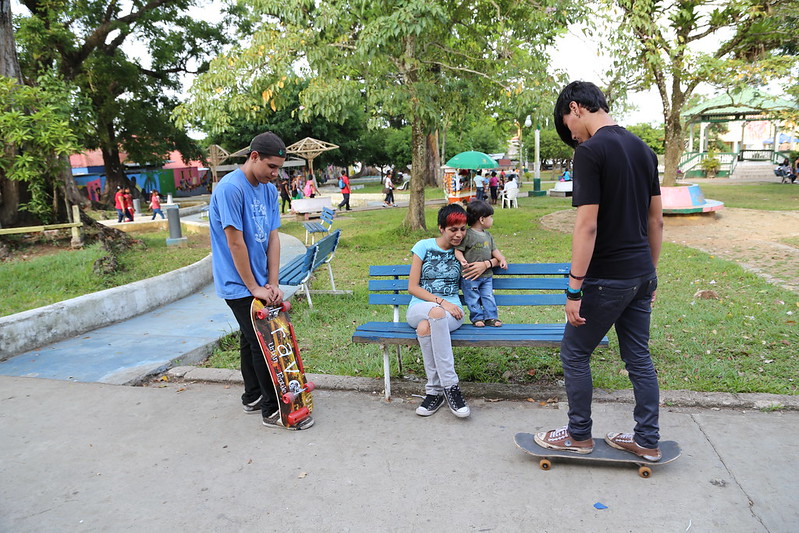






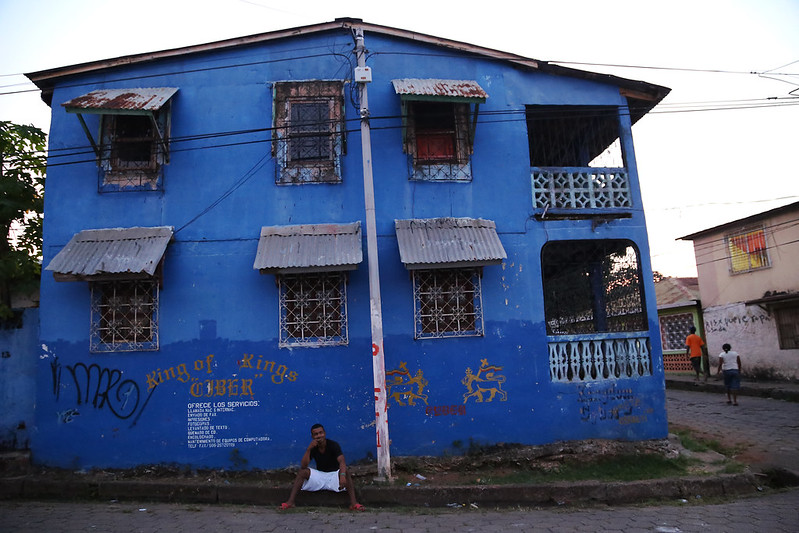
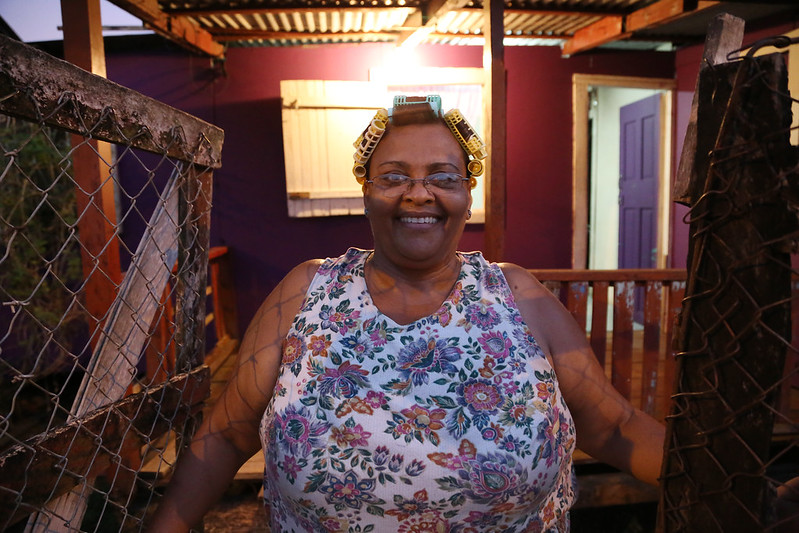
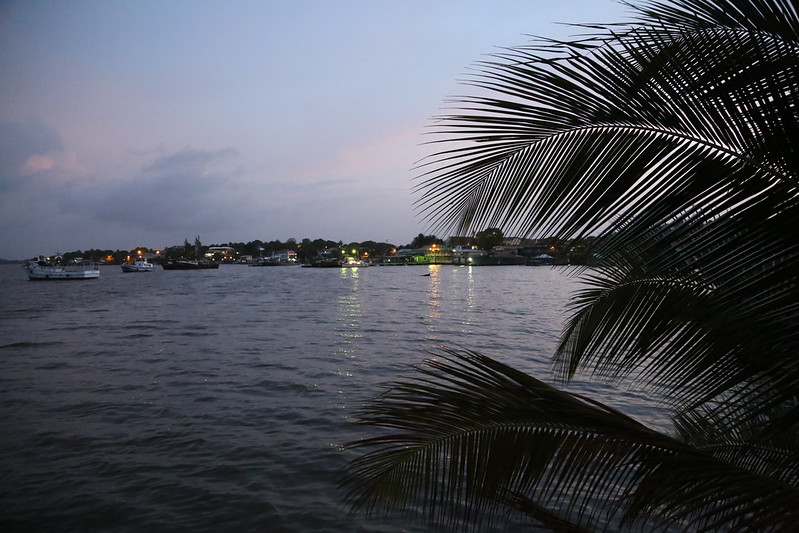


As agreed, the daughter in the house, Angelica, took me out for me to see the Palo de Mayo celebrations. The festival is celebrated throughout the month in different neigbourhoods of Bluefields and ends with a big festival in the last weekend of May. We asked around to find out where the Palo de Mayo was and took a taxi to the 19 de Julio suburb of Bluefields to join the party. The dancing started with the Tululu chain of people dancing underneath a tunnel of arms, going round and round and round. And then there was some proper Palo de Mayo dirty dancing. We danced as well, although we didn’t go full-crazy as the other’s did, but it was great fun anyway, and the guys were not only great dancers but also completely fine with keeping their distance which was a bit against the stereotype I originally had about the dance and context. A fantastic evening full of positive energy.
We decided to go home when the party began crossing the line to slightly uncomfortable as people were getting too drunk. The moment we jumped into our cab and started driving home the sky opened up and I got a beautiful night to the sound of rain against the metal roof of my room.


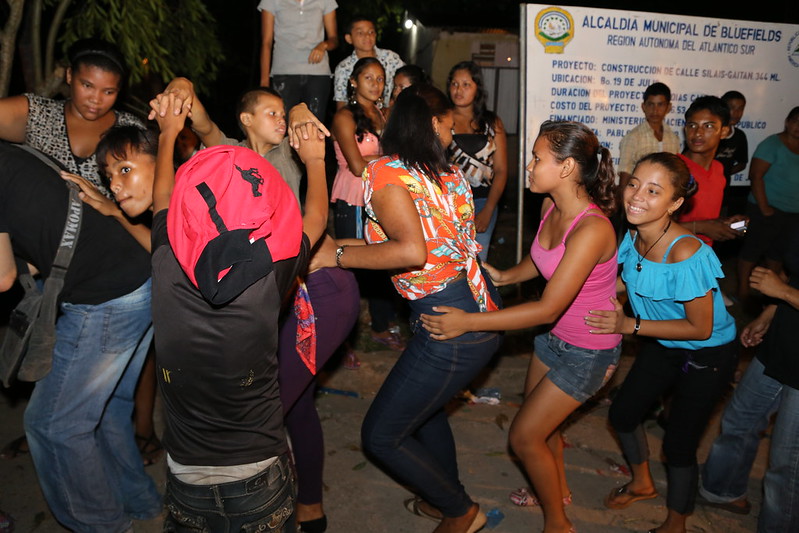
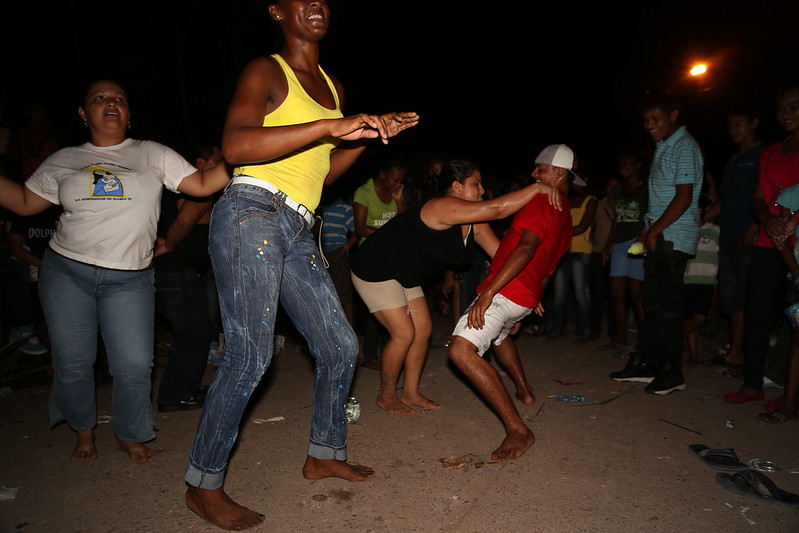
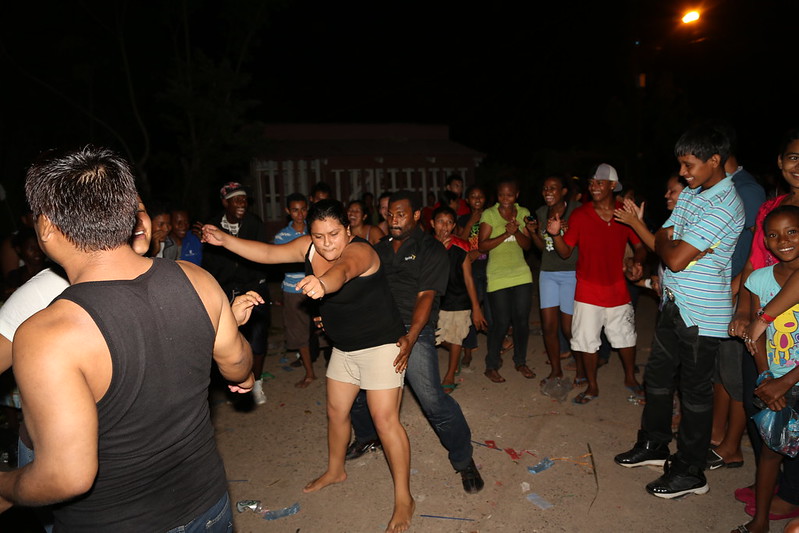





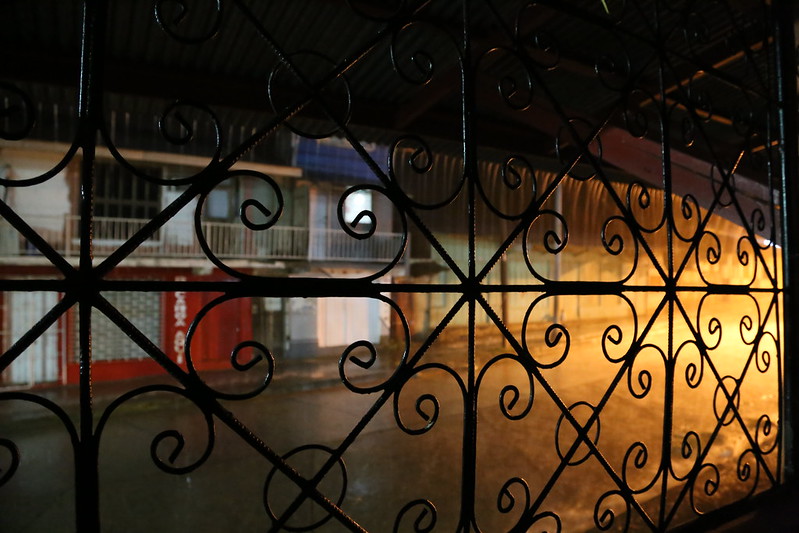
On Sunday, I woke up at 5.30am and hugged Angelica and her mother goodbye. I went to the airport and was there way too early, so I took a walk around the airport area instead. My camera took me to an area with houses built just by the water. There, I met an 84 year old man that was very happy about having his picture taken, and the two four-year-olds Merelyn and Marlo that I had a talk with – then I had to hurry back to the airport to catch my flight and wave goodbye to Bluefields, a true gem of diversity and kindness.

